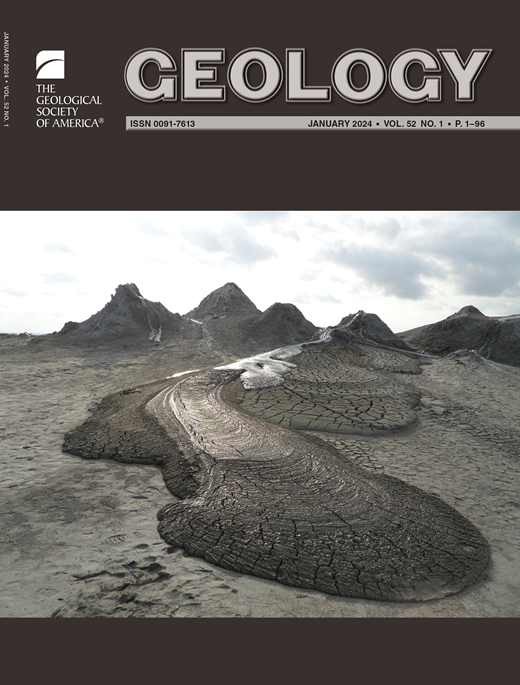 Jiarui Liu, 5th year EPSS PhD student in the labs of Dr. Tina Treude and Dr. Edward Young, recently revealed that microbes produce more methane in petroleum reservoirs. Jiarui’s paper “Clumped isotope evidence for microbial alteration of thermogenic methane in terrestrial mud volcanoes” was published and featured on the cover of GEOLOGY’s January 2024 issue.
Jiarui Liu, 5th year EPSS PhD student in the labs of Dr. Tina Treude and Dr. Edward Young, recently revealed that microbes produce more methane in petroleum reservoirs. Jiarui’s paper “Clumped isotope evidence for microbial alteration of thermogenic methane in terrestrial mud volcanoes” was published and featured on the cover of GEOLOGY’s January 2024 issue.
Methane is the main constituent of natural gas and an important greenhouse gas. It is dominantly generated by microorganisms at low temperatures and through the breakdown of organic molecules at high temperatures. Methane accumulations in petroleum reservoirs primarily originate from thermogenic sources in sedimentary basins. Approximately half of the world’s existing oil has undergone biodegradation, a process in which microorganisms break down heavy hydrocarbons to produce additional methane. However, the scale of biodegradation in global petroleum accumulations and the significance of its terminal product, secondary microbial methane, in the global gas endowment and carbon cycle remain largely unknown.
Mud volcanoes stand out as unique geological features through which natural gas from underground reservoirs reaches the atmosphere. They offer a convenient means to obtain geological information from the depths of petroleum reservoirs. The most active terrestrial area with the highest number of mud volcanoes is eastern Azerbaijan. Azerbaijan is an oil and gas-condensate country located on the west coast of the Caspian Sea, the world’s largest inland body of water. Known as “the Land of Fire” for its ancient burning oil and gas seeps, it is generally considered the first oil-producing country in the world. In 1847, Azerbaijan became the site of the world’s first industrially drilled oil well, and by 1899, it produced half of the volume of the world’s oil.
Jiarui Liu visited Azerbaijan in the summer of 2019, right before the start of his PhD program. He joined a local team of geologists to the field and sampled gas and liquid from 13 mud volcanoes across eastern Azerbaijan. Under the guidance of Dr. Tina Treude and Dr. Edward Young, he analyzed the chemical and isotopic compositions of the samples. In particular, the team unitized UCLA’s Panorama high-mass-resolution gas-source mass spectrometer to quantify the abundance of “clumped” isotopologues of methane gas. Isotopologues are molecules with the same chemical composition but different isotopic compositions. Methane clumped isotopologues are methane molecules that contain two or more rare isotopes (carbon-13 and/or deuterium).
This novel tool aided the team in deciphering the origin of methane and the evolution of natural gases emitted from mud volcanoes. They discovered that the methane emitted into the atmosphere was predominantly a result of the microbial degradation of petroleum rather than the abiotic breakdown of organic molecules at high temperatures. During petroleum biodegradation, hydrocarbons are converted to methane, potentially significantly increasing methane emissions into the atmosphere. Therefore, it is crucial to consider the role of secondary microbial methane in biological contributions to global methane budgets. Overall, this approach offers a unique perspective for tracking the fate of methane in oil and gas reservoirs. Read more about Jiarui’s research at the link provided below.
